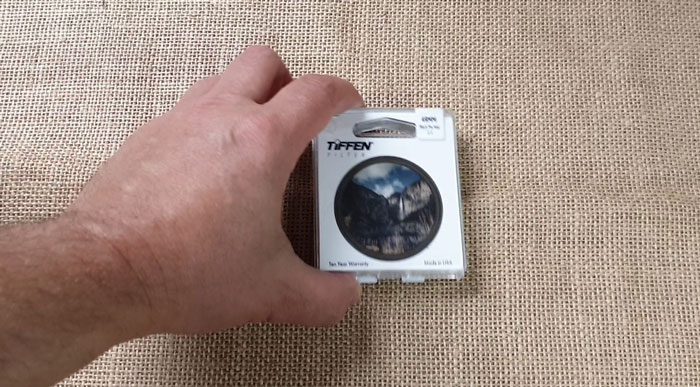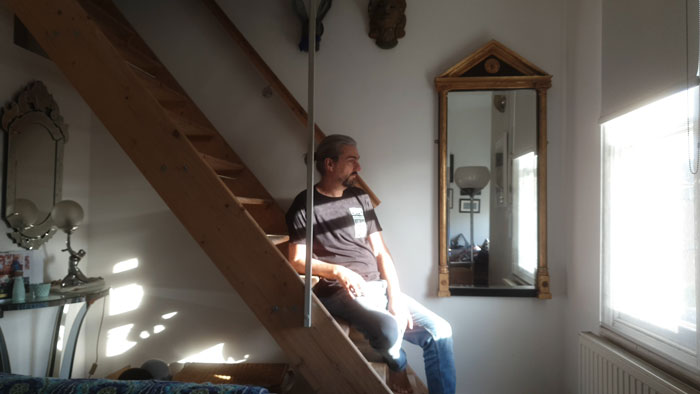Tiffen Black Pro Mist for Smartphone Videography
Before you try Moment’s new CineBloom diffusion filters, check out Tiffen’s Black Pro Mist – the popular industry standard.
I’ve been trying to make my digital video look more like film for over 10 years. In that time I’ve tried pretty much all the recommended techniques. But when I watched movies, I saw something was missing and I couldn’t work out how to achieve it.
I tried shooting with a flat colour profile. I tried using a 1/48th shutter speed to mimic the 180 degree shutter in film cameras. I kept my ISO low to avoid digital noise. And it certainly looked better.
But again, watching professionally shot movies, I could see they were getting a beautiful effect that I couldn’t get. So I put it down to the cameras, lighting and lenses I was using. There must be some technique pros use when you have the budget that we just can’t get with our cheap smartphone cameras.
Then, a couple of weeks ago, I was researching camera filters when I finally discovered what it was I’d been looking for. The crazy thing is, it’s actually really simple.
Well, it is a kind of filter. But can you guess which type?
Some Examples of the Cinematic Film Look
Since I realised how this is actually done, I started seeing it everywhere. Like, it seemed almost every movie or TV show is doing this to give their digital video a more cinematic film look. So I started collecting samples from the stuff I’ve been watching, so I could show you what I mean.
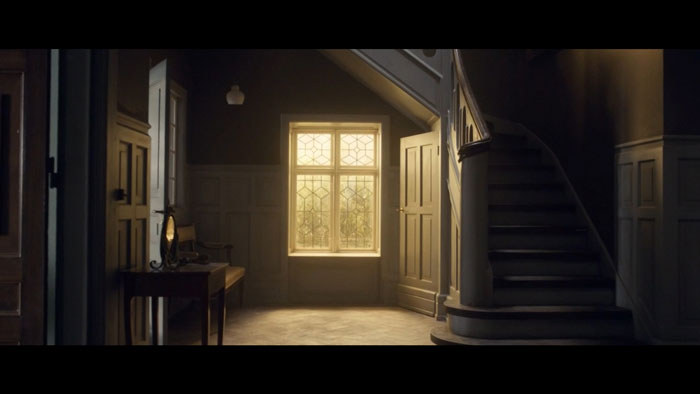
This is still image from the film The Commune directed by Thomas Vinterberg, who is one of the original Dogme founders.
See how the light from the window is glowing? Because when I shoot a window like this with my smartphone, I get a blown-out window with harsh ugly edges. Whereas, in this shot, the edges between the light in the window and the frame are smudged and soft – which kind of hides that nasty digital look.
I think you’ll agree, this effect really adds a beautifying, romantic feel to the shot. This whole sequence has a glowing, retro feel to it, with soft tones. The feeling is of golden memories. In fact, the film is set in the 1970s.
As it happens, I also lived on a commune in the 1970s. So I definitely connected with this film and this idea of a romanticised past.
99 Homes (2014) – cinematography by Bobby Bukowski
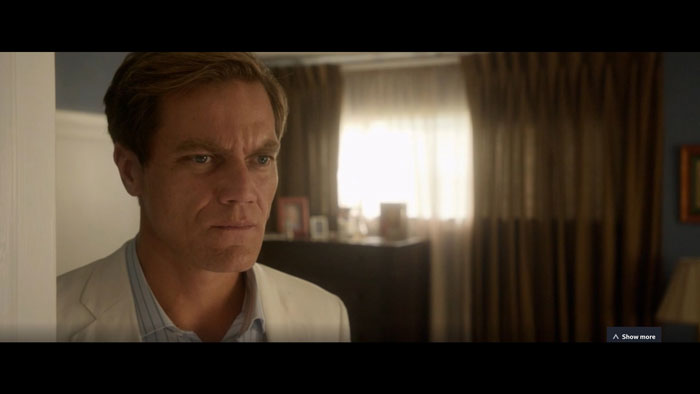
Again, with this still image from Ramin Bahrani’s 99 Homes we see a blown out window in the background. But see how it glows. Now compare that to your own footage of windows. Unless you are using one of these filters, it probably won’t look like this.
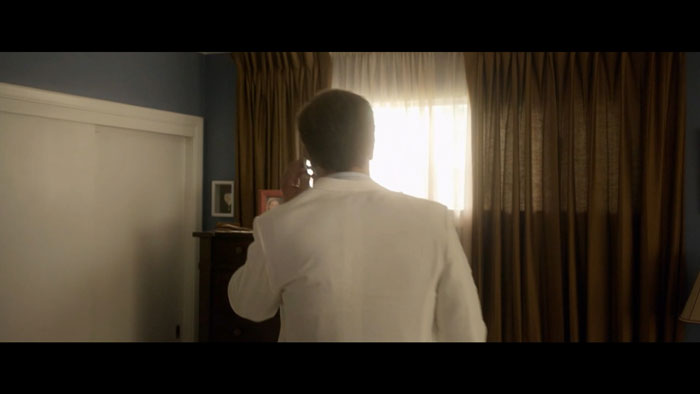
Now, as he turns and moves across the window, the light spills across him. Without this a filter, the edge of the actor would be sharp and nasty digital looking. And this is the thing which drove crazy for a long time. I even spent a lot of time trying to replicate this in one of my films, using a method in Adobe After Effects.
And it does actually work. But it would really have saved a huge amount of time if we’d just used one of these filters. Plus the result would probably look more organic and less like a digital effect.
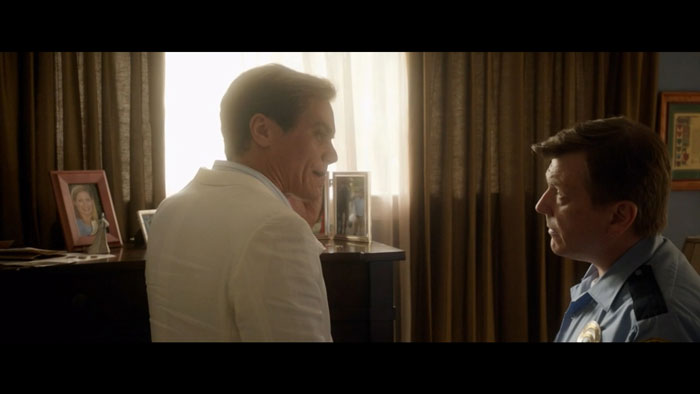
If you look at his face here as he turns to speak to another character, you can see how this filter reduces the contrast on his face. Now, reducing contrast on an actor’s face (or anyone’s face) is obviously going to me much more flattering than having harsh shadows which show up every wrinkle and skin blemish.
Without this filter, the actor (Michael Shannon) would more likely be in shadow so he’d look more like a silhouette. And that’s the thing about this filter – it even brings out details in the shadow. And that’s without having to use various colour profiles and LUTs.
Using this filter, which is actually known as a diffusion filter, you’ll get extra details in the shadows directly into the camera. To achieve a cinematic film look it’s vitally important with the highly compressed videos we get from our smartphones that we do as much in camera as possible.
Heartbound: A Different Kind of Love Story (2018)

In this Danish documentary about Danish men and their Thai brides, we can see again the use of this filter. It’s particularly obvious in this shot, as the light bouncing off the motorbike has a big glow on it.
But the filter is probably being used in the other shots too. It’s just that the filter’s effect is more obvious when there are strong highlights. But even in the other shots, it’s working to soften the image and reduce contrast.
Interestingly in this film, there is a 7 year gap between the first half and the second half. The film makes a 7 year jump. And in that time, you can see they upgraded their camera and also added more subtle filters.
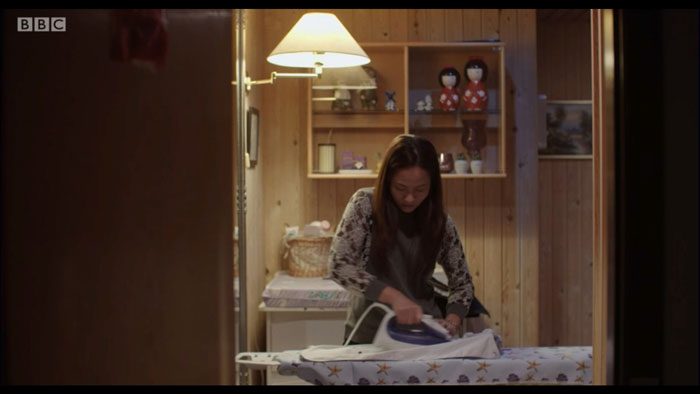
Dave (2020) – cinematography Brian Lannin
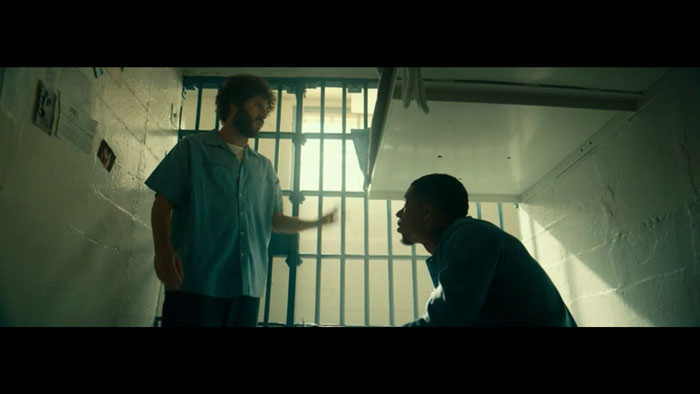
This is a show starring American comedian Dave Burd. By accident, I watched the last episode first, which starts with a narrative conveyed via 5 minute rap and I thought, “wow this is ground breaking” and I thought all the other episodes would be told via rap songs. Turns out they are more conventional, in that sense. I enjoyed it anyway.
So again, I noticed the use of diffusion filters. Especially in this shot here, with the window in the background. So you’re probably starting to get a sense that windows and bright lights show you a diffusion filter is being used.
That is, unless they are adding this digitally. Which is also possible. But essentially the effect is the same. A nice glowing, diffused light washing out from the window, which would otherwise contain harsh digital lines.
The Luminaries (2020) – cinematography by Denson Baker
This is a show I found on BBC iPlayer. Actually, I read that they received many complaints about the lighting, as it was too dark. Certainly some of the first scenes I saw were extremely dark, although the makers say this was a creative choice.
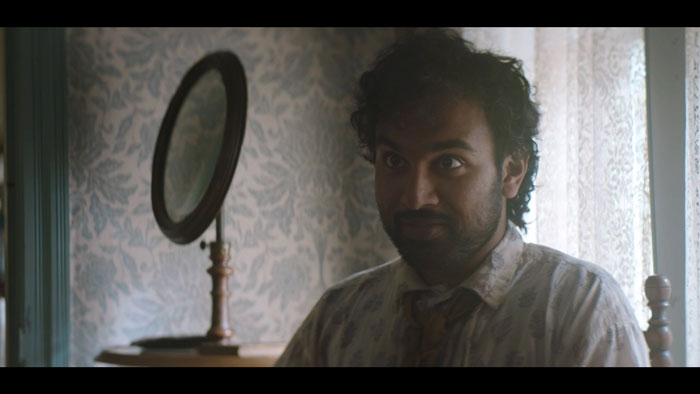
This close up of one of the main characters so they’re using quite an extreme diffusion filter. See how the contrast on Himesh Patel’s face is greatly reduced. This diffusion effect also ties the elements of the frame together. It makes it feel as if the window, the actor and other elements in the frame are all occupying the same colour palette.
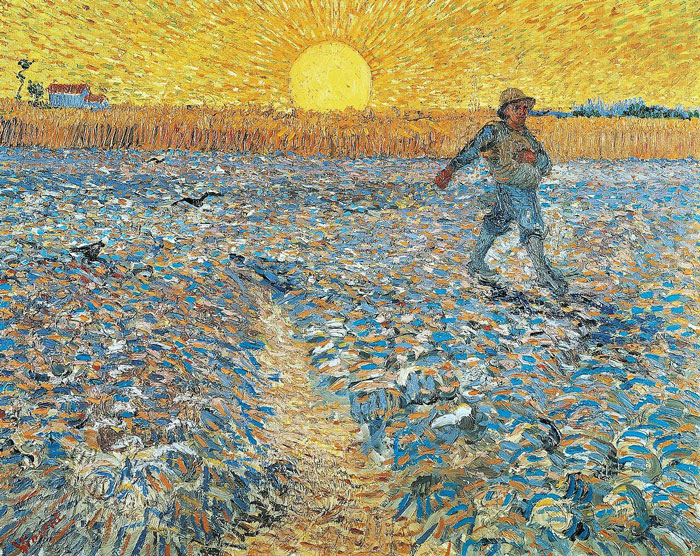
Remember, I have talked previously about cinematographer’s painting with light? Well, a technique actually used by painters is to take a colour – like the yellow from the sun in this painting by Van Gogh – and then “diffuse” it around the painting. In other words, smaller amounts of the same colour are added to other objects in the frame and this ties everything together.
Because that’s how light works. Light is bouncing around all over the place, reflecting off all kinds of different surfaces. So the effect this diffusion filter has is to make the frame appear more organic. Because organic means messy, while digital video (and audio) makes things look (or sound) clean and crisp.
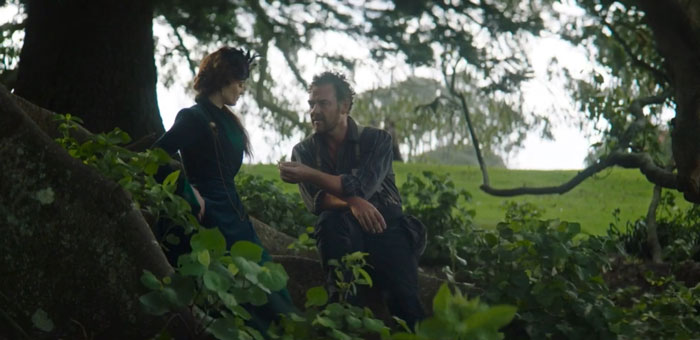
This is another clip from the same show. You can see how the sunlight is diffused across the subject, blending him with the background and reducing contrast.
Why would we want to do that? Of course, this is a creative choice. But essentially using these diffusion filters binds elements of our image together and gives the frame a more cinematic film look.
So now you can see the difference a diffusion filter makes, the question is – how do you add one to your smartphone filmmaking setup?
Diffusion Filters
So, the diffusion filter I stumbled on is called a Black Pro Mist and it’s made by a company called Tiffen. The Black Pro Mist is the one most talked about and it comes in 8 different strengths – from 5 at the top to 1/8, which is the weakest.
So depending on your creative needs, you can choose how much diffusion you want the filter to apply. The strongest filter is really going to create huge blooms from lights and windows, as well as significantly reduce contrast. On the other hand, the weakest will add just some subtle misting around the edges and reduce contrast a touch.
Of course, the ideal situation would be to have all 8 and choose the filter according to the needs of the shot. However, these filters are not the cheapest. Plus do you really want to be carrying around a big case full of filters?
Not only that, but the Black Pro Mist is only one of a large variety of diffusion filters, all of which create subtly different changes to the image. Which one are you going to choose? For that reason, I decided to start with the one everyone is talking about.
Tiffen Black Pro Mist 1/2
I opted for the Black Pro Mist 1/2 strength. So here’s some test shots to show you what difference it makes.
Same shot without the filter:
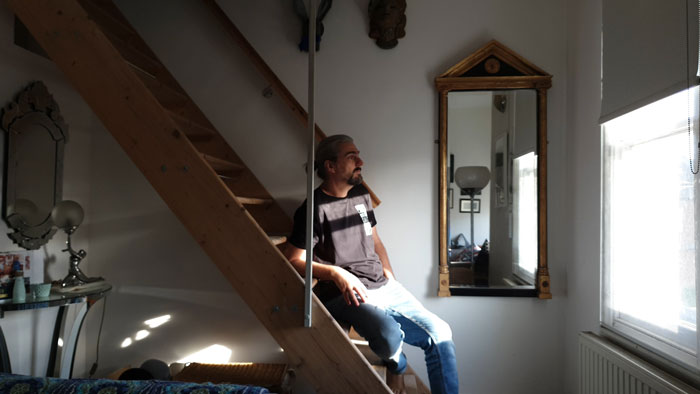
Notice the image with the Black Pro Mist filter has less contrast and perhaps a little more detail in the shadow. Also, the edges are a little softer. Adjusting the exposure and increasing the brightness also increases the light bloom effect.
When I started using this filter, I immediately felt like I had another set of colours in my cinematographer’s palette. While you might not always notice it, it really makes a big difference to the overall cinematic film look, in my opinion.
How to Mount a Diffusion Filter
Now, mounts like Beastgrip as well as these clips, often use a 37mm thread. So I visited Tiffen’s website and found they do a 37mm option, but only for the 1/4 and 1/8 strengths. Plus, I really wanted to purchase it via Amazon so I didn’t have to deal with import duty.
Because when I bought my Moondog Labs anamorphic, shipping from the States to the UK meant a few days delay plus an extra £30 or so. Anyway, Amazon UK didn’t stock the 37mm Black Pro Mist, but they did have the 49mm.
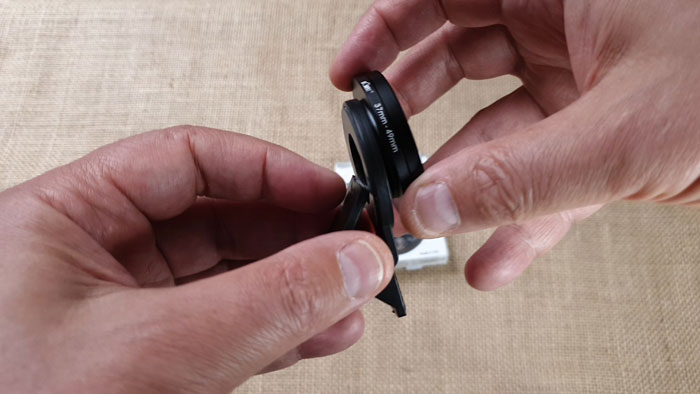
So I chose the 1/2 and also grabbed a 37mm to 49mm step up ring. Now I can mount the 49mm to my 37mm clip. Now I wish I’d bought the 58mm Black Pro Mist because then it would have mounted directly to my Beastgrip 3x tele. Anyway, when you start adding lenses and filters, you can see choices start getting more complex.
I’m really not a fan of overcomplicating things. I just want to shoot films and I hate being bogged down in lenses, filters, tripods, microphones and trying to work out which one is best to use. But as this filter is so key to getting a cinematic film look, as used by most professional cinematographers, I do think it’s worth the invested time.
It’s still about composition
If you buy one of these thinking it’s going to magically make you a better cinematographer, I’m afraid you’ll be disappointed. It doesn’t matter what equipment you use, if your framing and lighting is ugly, your shot is going to be ugly.
BUT the point is, if you get everything right and – like me – you feel there’s this essential ingredient missing, then adding this extra option is like icing on the cake. But like – you know – beautiful, soft and romantic icing.
For example, wide shots of landscapes or cityscapes probably won’t benefit too much from a diffusion filter. If you go out in the middle of the day, when everything is washed with sunlight, then a diffusion filter will just make it look even more washed out.
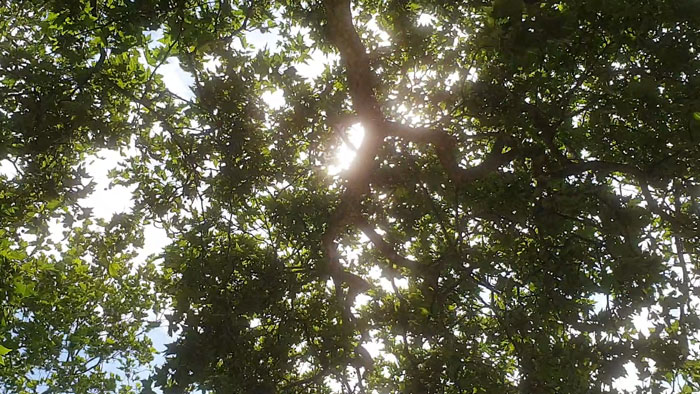
On the other hand, a gorgeous sunset might work better. That’s because the diffusion filter needs the frame to have a contrast between dark and light areas.
That’s why we see more clearly on a shot of a window in daylight. You can see the light from the window spilling out across the surrounding area. But if that area was just as bright as the window, then there’s less advantage to this filter.
Also, these diffusion filters are very good for softening the skin of your subject’s face. And, most of the time, if we’re filming people we want to show them in the best way possible. And you can also get this nice light filtering across a subject, if they are framed by a window or a bright light.
What I’m saying is, you still need to work on your composition. And this tool is going to help you out, by softening the digital lines, by revealing details in the shadows and by reducing contrast.
Cinematography is all about painting with light. So a diffusion filter is something you can really work with to add extra flavours and textures. And ultimately to make your videos look more cinematic.
Find Tiffen Black Pro Mist on Amazon
Eager to learn more?
Join our weekly newsletter featuring inspiring stories, no-budget filmmaking tips and comprehensive equipment reviews to help you turn your film projects into reality!
Simon Horrocks
Simon Horrocks is a screenwriter & filmmaker. His debut feature THIRD CONTACT was shot on a consumer camcorder and premiered at the BFI IMAX in 2013. His shot-on-smartphones sci-fi series SILENT EYE featured on Amazon Prime. He now runs a popular Patreon page which offers online courses for beginners, customised tips and more: www.patreon.com/SilentEye


